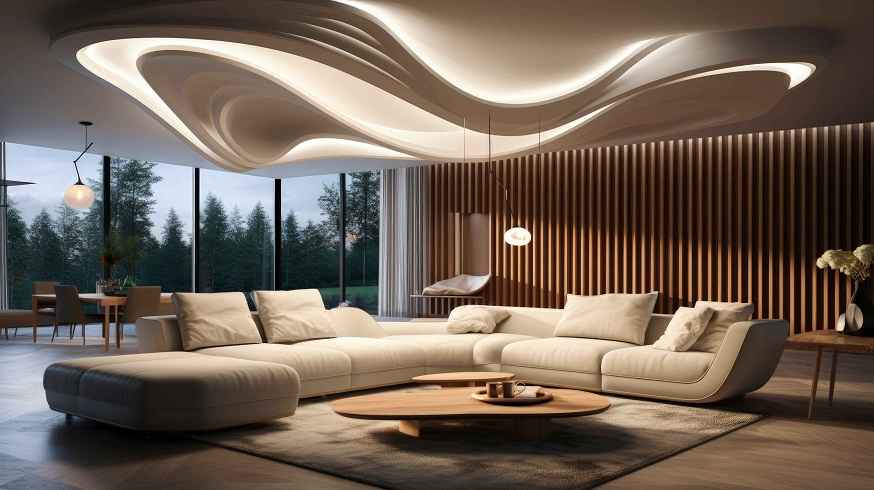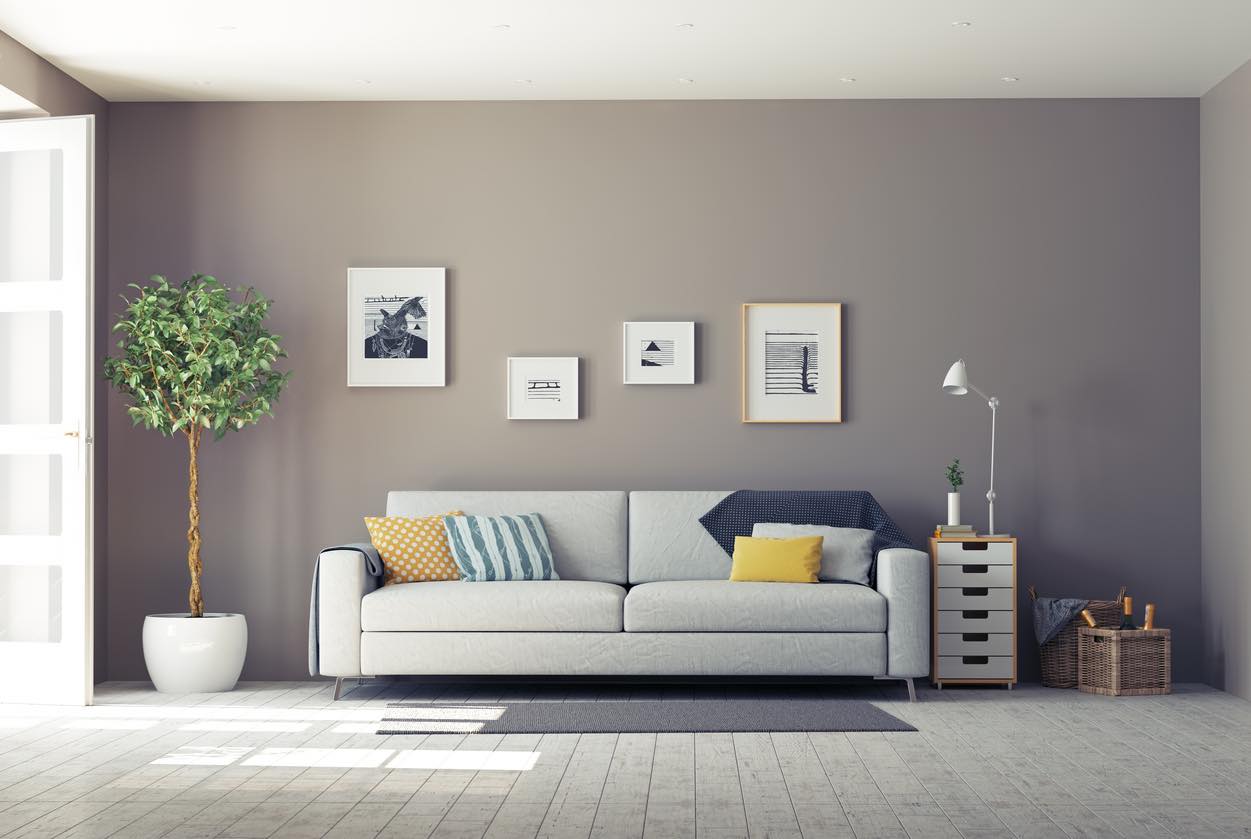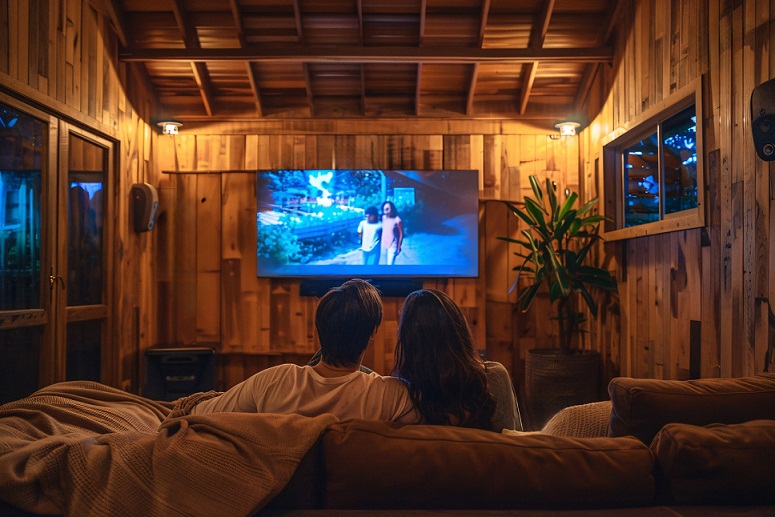The world of home decor is constantly evolving, and one trend that has been gaining significant traction in recent years is the use of LED (Light Emitting Diode) lighting. As homeowners seek to create inviting and visually appealing spaces, the benefits of incorporating LED lighting into their home decor have become increasingly apparent.
Lighting plays a crucial role in shaping the ambiance and mood of a room. It can enhance the overall aesthetic, highlight specific design elements, and even impact the functionality of a space. With the rise of energy-efficient and versatile LED technology, homeowners now have access to a wide range of lighting solutions that can truly transform their living environments.
Section 1: Understanding LED Lighting
1.1 What is LED Lighting?
LED (Light Emitting Diode) lighting is a revolutionary technology that has been steadily gaining popularity in the home decor industry. Unlike traditional incandescent or fluorescent bulbs, LEDs are semiconductor devices that emit light when an electric current passes through them.
The history of LED lighting can be traced back to the 1960s, when the first practical LED was developed. Over the years, advancements in LED technology have led to increased efficiency, brightness, and color options, making them a highly versatile and energy-saving alternative to conventional lighting solutions.
1.2 How LED Lighting Works
At the core of LED technology is the light-emitting diode, a semiconductor device that converts electrical energy into light. When an electric current is applied to the diode, it causes the semiconductor material to emit photons, or light particles. This process is known as electroluminescence, and it is what gives LEDs their distinctive glow.
Compared to traditional lighting sources, LEDs are more efficient in converting energy into light. They can produce the same amount of illumination while consuming significantly less power. This efficiency is a key factor in the growing popularity of LED lighting, as it translates to lower energy bills and a reduced environmental impact.
Furthermore, LEDs offer a wide range of color temperatures, from warm, cozy hues to cool, bright tones. This versatility allows homeowners to create the perfect lighting ambiance to suit their personal preferences and the overall design aesthetic of their living spaces.
Section 2: Energy Efficiency
2.1 Lower Energy Consumption
One of the most significant benefits of using LED lighting in home decor is its remarkable energy efficiency. According to the U.S. Department of Energy, LED bulbs can use up to 75% less energy than traditional incandescent bulbs and 25-30% less energy than compact fluorescent lamp (CFL) bulbs.
This dramatic reduction in energy consumption translates to substantial savings on monthly electricity bills. For example, a typical household that replaces 30 incandescent bulbs with LED equivalents can save up to $300 per year on their energy costs. As homeowners become more conscious of their environmental impact and the rising cost of energy, the appeal of energy-efficient LED lighting solutions becomes increasingly compelling.
2.2 Environmental Impact
In addition to the financial savings, the energy efficiency of LED lighting also has a positive impact on the environment. By consuming less electricity, LED bulbs contribute to a lower carbon footprint and reduced greenhouse gas emissions.
Conventional lighting sources, such as incandescent and fluorescent bulbs, often require more energy to produce the same amount of illumination as LEDs. This increased energy demand places a greater strain on power plants, which typically rely on fossil fuels, leading to higher levels of air pollution and greenhouse gas emissions.
In contrast, LED lighting’s energy-efficient design helps to alleviate the burden on power generation and distribution infrastructure. As more households and businesses switch to LED lighting, the cumulative effect on energy consumption and environmental sustainability can be significant.
Moreover, LED bulbs are often more environmentally friendly in their manufacturing and disposal processes. They do not contain harmful materials like mercury, which is commonly found in fluorescent lamps, making them a safer and more eco-friendly choice for homeowners.
Section 3: Longevity and Durability
3.1 Lifespan of LED Bulbs
One of the standout features of LED lighting is its exceptional longevity. LED bulbs are known to have a significantly longer lifespan compared to traditional lighting options, such as incandescent and fluorescent bulbs.
On average, LED bulbs can last up to 50,000 hours of use, which is equivalent to over 17 years of continuous operation or 50 times longer than a typical incandescent bulb. This extended lifespan can provide substantial long-term cost savings for homeowners, as they won’t need to replace their LED bulbs as frequently.
The longevity of LED lighting is attributed to the way the technology is designed. Unlike traditional bulbs, which can burn out or break over time, LEDs are solid-state devices that are less susceptible to mechanical failure or gradual degradation. This durability ensures that LED bulbs can maintain their brightness and performance for an impressively long period.
3.2 Durability and Resilience
In addition to their extended lifespan, LED bulbs are also known for their exceptional durability and resilience. Unlike fragile incandescent or fluorescent bulbs, LEDs are built to withstand various environmental factors, making them ideal for use in various home settings.
LED bulbs are highly resistant to physical impacts, vibrations, and extreme temperatures, making them suitable for use in areas like kitchens, bathrooms, and outdoor spaces. This resilience means that LED lighting is less likely to break or malfunction, reducing the need for frequent replacements and maintenance.
Furthermore, LED bulbs are not affected by frequent on-and-off switching, a common issue with traditional lighting solutions. This makes them a reliable choice for areas where lights are frequently turned on and off, such as in hallways, stairwells, or motion-activated security lighting.
Section 4: Versatility in Home Decor
4.1 Variety of Styles and Colors
One of the key advantages of LED lighting in home decor is the vast array of styles and color options available. LED technology has evolved to the point where homeowners can find LED bulbs and fixtures that seamlessly integrate with a wide range of design aesthetics, from modern and minimalist to traditional and vintage.
LED bulbs come in a variety of shapes, sizes, and finishes, allowing homeowners to choose the perfect lighting solution to complement their existing decor. From sleek, contemporary recessed lights to decorative, Edison-style LED filament bulbs, the design possibilities are endless.
Moreover, LED lighting offers an impressive range of color temperatures, enabling homeowners to create the desired ambiance and mood in their living spaces. Warm, soft white tones can evoke a cozy, inviting atmosphere, while cool, bright white hues can enhance the sense of openness and productivity in a room.
This versatility in color temperature allows homeowners to tailor their lighting to specific needs and preferences, whether they’re creating a relaxing ambiance in the living room or providing task-oriented illumination in the kitchen or home office.
4.2 Innovative Lighting Solutions
Beyond traditional bulb replacements, LED lighting has also enabled the development of innovative and creative home decor solutions. Homeowners can now explore a wide range of LED-powered lighting fixtures and accents to enhance the visual appeal and functionality of their living spaces.
For example, LED strip lighting can be used to create striking accent lighting, highlighting architectural features, alcoves, or even the underside of cabinets. Recessed LED downlights can provide efficient, uniform illumination throughout a room, while LED track lighting can be used to spotlight specific areas or artwork.
Homeowners have also embraced the use of LED lighting in more unconventional ways, such as incorporating it into furniture, shelving, or even staircase handrails. These unique lighting solutions not only add visual interest but can also serve practical purposes, such as providing task lighting or enhancing home security.
One homeowner, for instance, installed LED-powered motion-sensor lights along their staircase, ensuring safe navigation and a welcoming ambiance for guests. Another homeowner utilized LED strip lighting under their kitchen cabinets, creating a warm, inviting glow that complemented the overall design.
These innovative applications of LED lighting in home decor demonstrate the versatility and creative potential of this technology, allowing homeowners to transform their living spaces in unique and visually striking ways.
Section 5: Health and Well-Being Benefits
5.1 Improved Mood and Productivity
Lighting has a profound impact on our mood, well-being, and productivity, and LED lighting offers several advantages in this regard. Research has shown that the color temperature and intensity of lighting can significantly influence our circadian rhythms, affecting our sleep patterns, energy levels, and overall mood.
Unlike traditional lighting sources, which can emit harsh, flickering light, LED lighting can be designed to mimic natural daylight, providing a more soothing and comfortable illumination. This can have a positive impact on our mental state, helping to reduce stress, improve focus, and boost overall productivity, especially in home office or study environments.
By strategically incorporating LED lighting into their home decor, homeowners can create lighting conditions that promote relaxation, concentration, and a sense of well-being. For example, using warmer, softer LED lighting in living rooms and bedrooms can help create a cozy, calming atmosphere, while brighter, more energizing LED lighting in home offices and workspaces can enhance focus and productivity.
You may also read (tips setting up tranquil meditation room)
5.2 Reduced Eye Strain
Another significant health benefit of LED lighting in home decor is its ability to reduce eye strain and fatigue. Traditional lighting sources, such as incandescent and fluorescent bulbs, can emit harsh, glaring light that can cause discomfort and strain on the eyes, leading to headaches, blurred vision, and other visual issues.
In contrast, LED lighting is designed to provide a more even, diffused distribution of light, reducing the contrast between bright and dark areas in a room. This helps to minimize the strain on the eyes, making it easier to focus and reducing the risk of eye fatigue, especially during prolonged periods of reading, working, or engaging in other visual tasks.
Furthermore, LED bulbs can be equipped with features that further enhance their eye-friendly properties, such as adjustable color temperatures and dimming capabilities. By allowing homeowners to customize the lighting levels and color tones, they can create optimal lighting conditions that are tailored to their individual needs and preferences, promoting better visual comfort and overall well-being.
Section 6: Smart Home Integration
6.1 Compatibility with Smart Home Systems
The advancement of smart home technology has further enhanced the appeal of LED lighting in home decor. Many LED bulbs and fixtures are now designed to be compatible with a wide range of smart home systems, allowing homeowners to seamlessly integrate their lighting into a broader network of connected devices.
By integrating LED lighting with smart home platforms, homeowners can enjoy a new level of control and convenience. They can use voice commands, mobile apps, or even automated schedules to adjust the brightness, color, and timing of their LED lights, creating personalized lighting scenes that cater to their daily routines and preferences.
This level of smart home integration not only adds a touch of modern sophistication to the home but also enables homeowners to optimize their energy usage and create more efficient, responsive lighting solutions. For example, homeowners can program their LED lights to automatically turn off when a room is unoccupied or to gradually dim in the evening, helping to reduce energy consumption and save on utility bills.
6.2 Enhancing Home Security
In addition to the convenience and energy-saving benefits, the integration of LED lighting with smart home systems can also enhance the security of a household. LED lights can be programmed to work in conjunction with motion sensors, security cameras, and other home automation devices, creating a comprehensive security solution.
For instance, homeowners can use LED lights equipped with motion sensors to automatically illuminate dark areas around the home, deterring potential intruders and providing an added layer of safety. These smart LED lights can also be integrated with security cameras, allowing homeowners to receive alerts and monitor their property remotely through their mobile devices.
Furthermore, the ability to control LED lighting remotely, even when away from home, can give the impression of an occupied property, deterring burglars and providing peace of mind for homeowners. This level of smart home integration and security features makes LED lighting an increasingly attractive option for homeowners seeking to enhance the safety and functionality of their living spaces.
Section 7: Cost-Effectiveness
7.1 Initial Investment vs. Long-Term Savings
While the initial investment in LED lighting may be slightly higher compared to traditional lighting options, the long-term cost savings and benefits of LED technology make it a highly cost-effective choice for homeowners.
LED bulbs typically have a higher upfront cost than incandescent or compact fluorescent bulbs, but this investment is quickly offset by the significant energy savings and extended lifespan of LED lighting. According to the U.S. Department of Energy, the average household can save up to $1,000 over the lifetime of a single LED bulb, thanks to its lower energy consumption and reduced need for replacement.
Moreover, many utility companies and government agencies offer rebates and incentives for homeowners who switch to energy-efficient LED lighting, further reducing the initial cost barrier and making the transition to LED lighting even more financially appealing.
7.2 Value Addition to Property
In addition to the direct cost savings, the installation of LED lighting in a home can also add significant value to the property, making it an attractive investment for homeowners.
Prospective home buyers often prioritize modern, energy-efficient features, and the presence of well-designed LED lighting can be a compelling selling point. Homes with LED lighting solutions, such as recessed downlights, accent lighting, and smart home integration, can stand out in the real estate market and command higher prices, providing a strong return on investment for homeowners.
Furthermore, the long-term durability and low maintenance requirements of LED lighting can be seen as an added benefit, as it reduces the need for frequent bulb replacements and ongoing lighting-related expenses for potential buyers.
Conclusion
In conclusion, the benefits of incorporating LED lighting into home decor are numerous and compelling. From energy efficiency and longevity to versatility and health advantages, LED technology has transformed the way homeowners approach lighting in their living spaces.
By offering significant energy savings, reduced environmental impact, and exceptional durability, LED lighting provides homeowners with a cost-effective and practical solution that can enhance the overall ambiance and functionality of their homes. The wide range of styles, colors, and innovative lighting solutions available further allows homeowners to tailor their lighting to their specific design preferences and needs.
Moreover, the integration of LED lighting with smart home systems has introduced a new level of convenience, control, and security, making it an increasingly attractive option for homeowners seeking to modernize and optimize their living environments.
As the demand for energy-efficient and visually appealing home decor continues to grow, the benefits of LED lighting are poised to become even more prominent. By embracing the power of LED technology, homeowners can create stunning, practical, and cost-effective living spaces that not only reflect their personal style but also contribute to a more sustainable and comfortable home environment.
We encourage you to explore the vast possibilities of LED lighting and consider incorporating it into your home decor to unlock the countless benefits it has to offer. With its unparalleled efficiency, versatility, and long-term value, LED lighting is truly a game-changer in the world of home design and decor.
You may also read (corner space utilization ideas)




